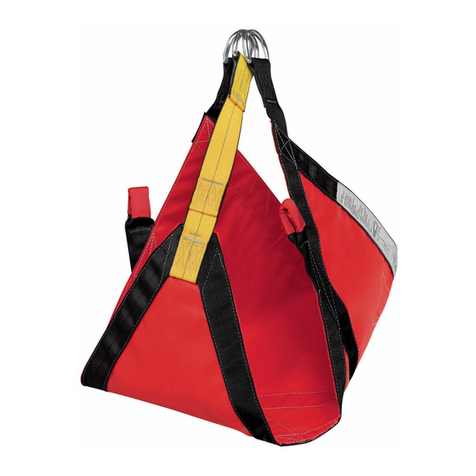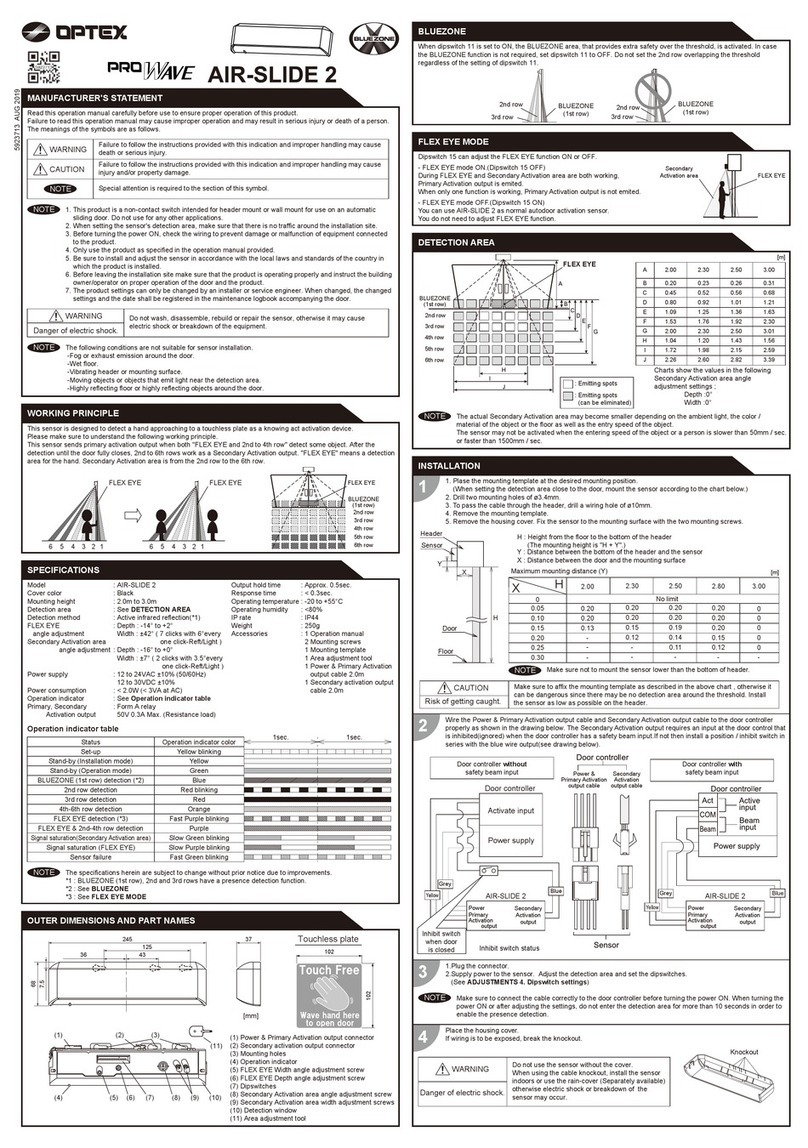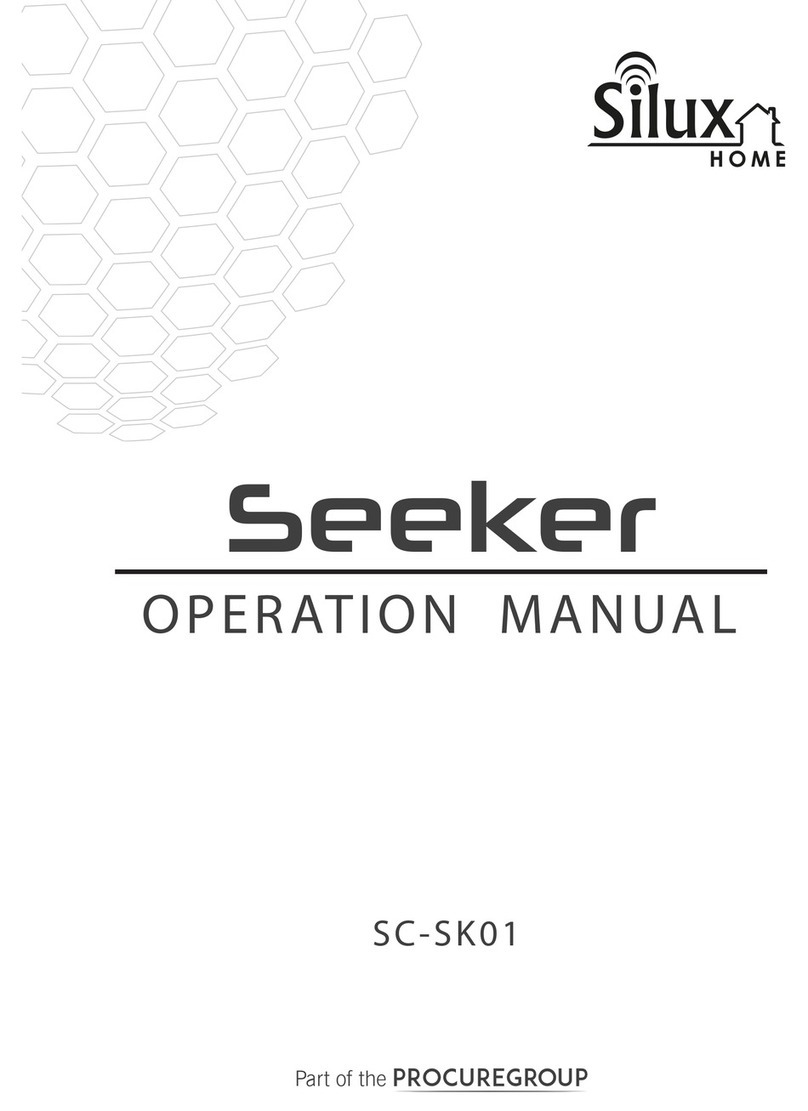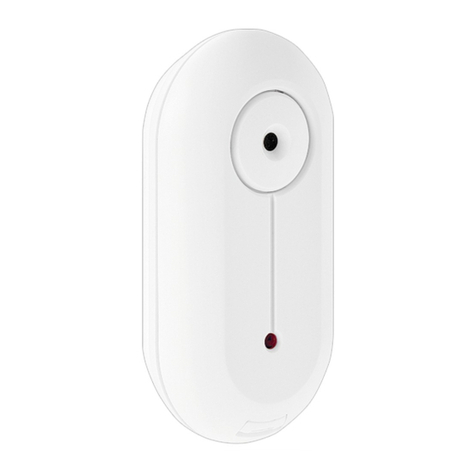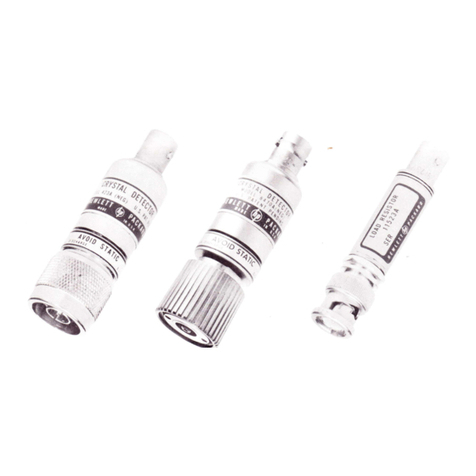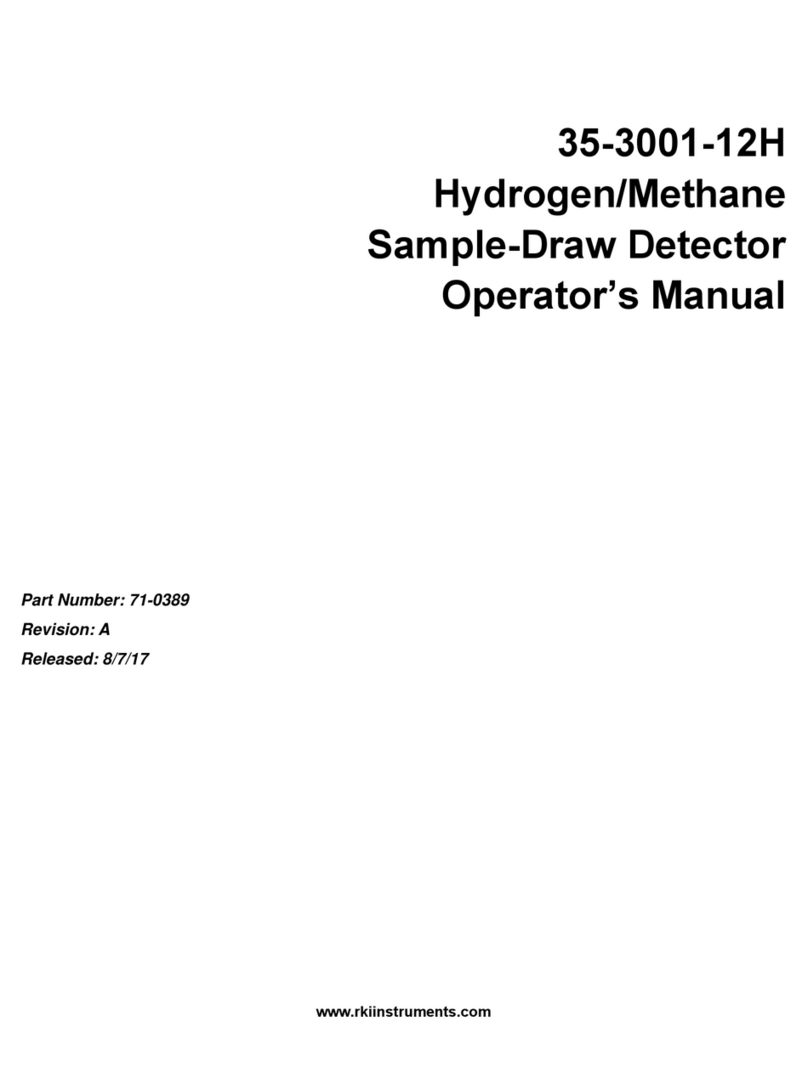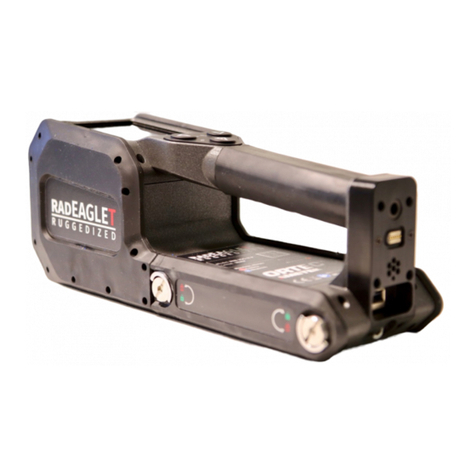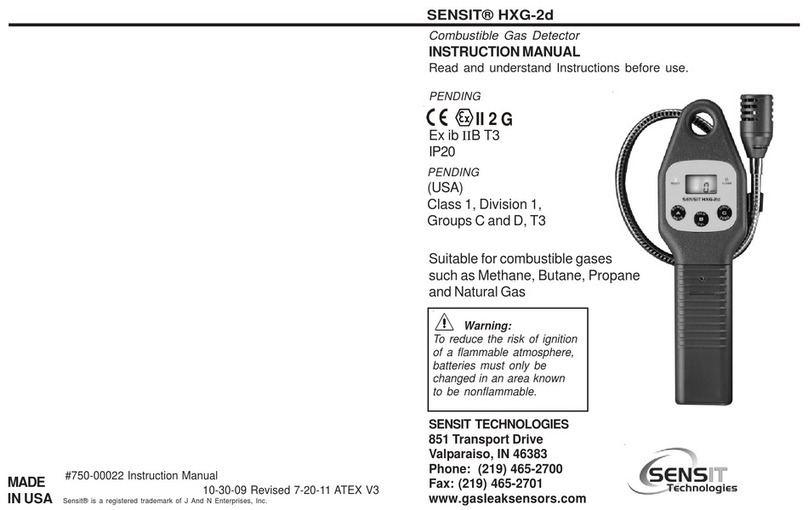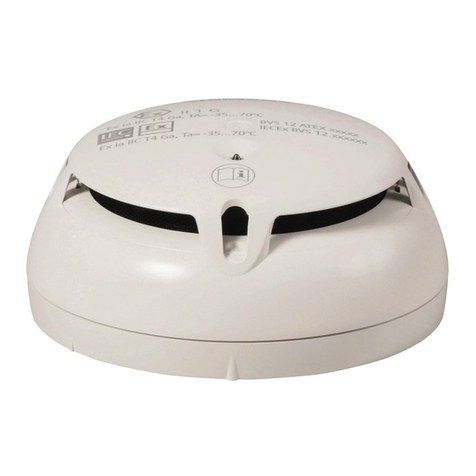Dilon Navigator 2.0 Troubleshooting guide

User/Service Manual
Manufactured by:
Dilon Technologies, Inc.
12050 Jefferson Avenue
Suite 340
Newport News, VA 23606
USA
Phone: 1-844-DILONNAV

www.Dilon.com - 1 - N2-5000-07-001 Rev 11
Important Notes
All personnel that will interact with this Navigator 2.0 System and Probes should read this Manual and
Service Guide to ensure proper use, handling, storage and maintenance.
This document and the information contained herein, is proprietary information of Dilon Technologies and
may not be reproduced, copied in whole or in part, adapted, modified, disclosed to others, or disseminated
without prior written consent of Dilon Technologies. This document is intended to be used by customers
as part of their Dilon Technologies equipment purchase.
Dilon Technologies provides this document without warranty of any kind, implied or expressed, including,
but not limited to, the implied warranties of merchantability and fitness for a particular purpose.
Dilon Technologies has taken care to ensure the accuracy of this document. However, Dilon Technologies
assumes no liability for errors or omissions, and reserves the right to make changes without further notice
to any products herein, to improve reliability, function, or design. Dilon Technologies may make
improvements or changes in the products or programs described in this document at any time.
Navigator 2.0TM is a trademark of Dilon Technologies.
Other trademarks and trade names are those of their respective owners.
Copyright Notice
Copyright 2020 Dilon Technologies, Newport News, VA 23606 United States of America.
Trademarks
Dilon Technologies™ is a registered trademark of Dilon Technologies.
All other company and product names are trademarks or registered trademarks of their respective owners.
Part Number
N2-5000-07-001 Rev 10 / 05March 2020

www.Dilon.com - 2 - N2-5000-07-001 Rev 11
User Manual: Table of Contents
1 Introduction .......................................................................................................................................... 3
1.1 Operating Principle ...................................................................................................................... 3
1.2 Intended Use ............................................................................................................................... 3
1.3 Indications for Use ...................................................................................................................... 3
1.4 Manufacture and Distribution ...................................................................................................... 3
1.5 Trademarks ................................................................................................................................. 4
1.6 Regulatory and Safety Requirements ......................................................................................... 4
2 System Overview and Components ................................................................................................... 6
3 Precautions .......................................................................................................................................... 7
3.1 General ....................................................................................................................................... 7
3.2 Control Unit, Battery, and Charger .............................................................................................. 7
3.3 Probe ........................................................................................................................................... 8
3.4 Electromagnetic Compatibility IEC 60601-1-2:2014 ................................................................... 8
3.5 Guidance and Manufacturer’s Declaration – Electromagnetic Emissions ................................... 9
3.6 Guidance and Manufacturer’s Declaration – Electromagnetic Immunity .................................... 9
4 Control Unit, Battery, and Cable ...................................................................................................... 12
4.1 Control Unit Features: Front ...................................................................................................... 12
4.2 Control Unit Features: Rear ...................................................................................................... 15
4.3 Battery (Part # N2-8500-02) ...................................................................................................... 17
4.4 Installing the Wireless Pilot Probe Battery ................................................................................ 18
4.5 Charging the Battery (Battery Charger Part # N2-8000-02) ...................................................... 19
4.6 Table 4B-4. Charge Bay LED Indications ................................................................................. 19
4.7 Flexible Probe Cable (Part # GP-4001-00) ............................................................................... 20
4.8 Useful Adjustments That Can Be Made During Procedures ..................................................... 21
5 Probe Connectivity and Use ............................................................................................................. 22
5.1 Navigator 2.0 with Wireless Pilot Probe .................................................................................... 22
5.2 Navigator 2.0 with Cabled Probes ............................................................................................. 24
6 Control Unit Cleaning ........................................................................................................................ 26
7 Probe and Cable Cleaning ................................................................................................................ 26
7.1 PREPARATION STEPS: ........................................................................................................... 27
7.2 Sterilization of Navigator Gamma Probes ................................................................................. 28
7.3 Navigator Gamma Probes Used in Non-Critical Environments: ................................................ 30
8 Specifications .................................................................................................................................... 31
8.1 Navigator 2.0 System Specifications ......................................................................................... 31
9 Accessories ....................................................................................................................................... 32
10 Troubleshooting ................................................................................................................................ 33
11 Maintenance ....................................................................................................................................... 35
11.1 Overview ................................................................................................................................ 35
11.2 Navigator Control Unit Fuse Replacement ............................................................................ 36
12 Repair ................................................................................................................................................. 37
13 Disposal .............................................................................................................................................. 38
14 Limited Warranty ............................................................................................................................... 38

Navigator 2.0 User Manual & Service Guide
www.Dilon.com - 3 - N2-5000-07-001 Rev 11
USER MANUAL
1 Introduction
1.1 Operating Principle
The Navigator 2.0 System detects presence of gamma rays, emitted from radioactive isotopes in body
organs or tissue. System use requires the Navigator 2.0 Control Unit, which allows the user to adjust the
system's settings and produces a variety of signal outputs. The control unit is powered by a rechargeable
battery. The system provides an increasing or decreasing sound and visual counts that vary as level of
gamma radiation increases or decreases.
The control unit works in conjunction with a hand-held probe that is connected to the control unit either via
a cable or wireless technology. Placing probe close to a radiation source increases number of counts
detected and localization occurs. As the distance between the probe and the radiation source is
increases, the number of gamma rays detected decreases.
The Navigator Control Unit is used with any of the following Navigator™ hand-held probe models. The
probes differ primarily in their size, shape, detector technology and connection to the control unit.
• 14mm Wireless Pilot Probe™ (angled tip & straight tip)
• 14mm Standard Lymphatic Mapping Probes (angled tip & straight tip)
• 11mm Superficial Head & Neck Probe (straight tip)
• 10mm Daniel Lung Probe™ (straight tip)
• 10mm Laparoscopic Probes (310mm & 190mm Lengths, straight tips)
The system is supplied non-sterile. This manual includes guidelines for the use of the probes and
accessories within the sterile field.
1.2 Intended Use
For the detection and quantification of gamma radiation from gamma-emitting isotopes in the body or
tissues. Use for non-imaging procedures to measure the amount of radionuclide absorbed by a particular
organ or body region.
1.3 Indications for Use
For the detection and quantification of gamma radiation from gamma-emitting isotopes in the body or
tissues. Use for non-imaging procedures to measure the amount of radionuclide absorbed by a particular
organ or body region.
1.4 Manufacture and Distribution
The system is manufactured and distributed by Dilon Technologies of Newport News, VA. Please direct all
inquiries about the Navigator 2.0 to Dilon Technologies.

Navigator 2.0 User Manual & Service Guide
www.Dilon.com - 4 - N2-5000-07-001 Rev 11
1.5 Trademarks
The following are trademarks of Dilon Technologies: Navigator 2.0™, Wireless Pilot Probe™, Dilon
Navigator GPS™, Dilon Navigator™, Dilon Technologies Navigator GPS™, Dilon Technologies
Navigator™, Dilon Technologies Navigator 2.0™, Daniel Lung Probe™, and Navigator™ when used in
context with the above.
Navigator GPS® is a registered trademark of Dilon Technologies.
1.6 Regulatory and Safety Requirements
The Dilon Navigator 2.0™ System including Probes comply with the following standards:
EC Directives
EMC Directive 89/336/EEC Group l, Class B
EN 55011
EMC Directive 89/336/EEC IEC 60601-1-2: 3rd Edition
Reciprocal Interference
This product has been tested and verified to ensure that there are no issues or concerns regarding
reciprocal interference. This includes EMI, EMC and RF. This product has been certified and tested by 3rd
party testing facilities. List of standards is as follows:
• Medical Electrical Equipment - Part 1: General requirements For Safety 1: Collateral
Standard: Safety Requirements For Medical Electrical Systems – IEC 60601-1-1: 3
Ed: Amendment 1.
• Medical Electrical Equipment - Part 1: General Requirements For Safety -
Collateral Standard: Electromagnetic Compatibility – IEC 60601-1-2: 4th Ed.
Safety
• Medical Electrical Equipment - Part 1: General requirements For Safety 1: Collateral
Standard: Safety Requirements For Medical Electrical Systems – IEC 60601-1: 3rd and
4th Ed.
• Medical Electrical Equipment - Part 1: General Requirements For Safety - Collateral
Standard: Electromagnetic Compatibility - Requirements and Tests – IEC 60601-1-2:
3rd and 4th edition.
• Medical Electrical Equipment - Part 1-6: General Requirements For Safety -
Collateral Standard: Usability - IEC 60601-1-6: 2010 + Am. 1: 2013.
• CAN/CSA C22.2 No. 60601-1, "Medical Electrical Equipment, Part 1: General
Requirements for Safety & Essential Performance; issued 2008-02-01 Ed. 2
• AS/NZS 3200-1-0, Deviations to IEC 601-1 for Application in Australia and New Zealand
CAUTION: Federal (USA) law restricts this device to sale and use by, or on the order
of, a physician.

Navigator 2.0 User Manual & Service Guide
www.Dilon.com - 5 - N2-5000-07-001 Rev 11
Table 1A. Explanation of Symbols
Type-CF Applied Part
RX only Caution: Federal
(USA) law restricts this device
to sale and use by, or on the
order of, a physician.
Date of Manufacture
Follow Instructions for Use
Manufactured by
Consult the Instructions for
Use
ON/OFF
Attention, consult
accompanying documents
Temperature limit
Serial number
Humidity limitation
Catalogue number
Wireless Capability
European Community
Representative
Fuse
WEEE
Battery
FCC statements: “This device complies with part 15 of the FCC Rules. Operation is subject to the
following two conditions: (1) This device may not cause harmful interference and (2) this device must
accept any interference received, including interference that may cause undesired operation.”
CAUTION: It is possible that cross communication may occur if two or more wireless
devices are used in close proximity
IC statements: “This device complies with Industry Canada license-exempt RSS standard(s). Operation is
subject to the following two conditions: (1) This device may not cause interference and (2) this device
must accept any interference, including interference that may cause undesired operation of the device.”
Cet appareil est conforme avec Industrie Canada RSS exemptes de licence standard (s). Son
fonctionnement est soumis aux deux conditions suivantes: (1) Ce dispositif ne doit pas causer
d’interférences, et (2) cet appareil doit accepter toute interférence, y compris les interferences qui peuvent
causer un mauvais fonctionnement de l’appareil.

Navigator 2.0 User Manual & Service Guide
www.Dilon.com - 6 - N2-5000-07-001 Rev 11
2 System Overview and Components
Probes are Type CF Applied Parts. See Table 2A below for a list of Probes.
Table 2A. Type CF Applied Parts and Probe Dimensions.
Probe
Tip
Diameter
Tip Angle
(degrees)
Length
(mm)
Weight
(grams)
Wireless Pilot Probes
14mm
0/30
257/260
255g
Standard Lymphatic Mapping Probes
14mm
0/
35
224/220
185g
Superficial Head & Neck Probe
11mm
0
207
161g
Daniel Lung Probe™
10mm
30
465
195g
Laparoscopic Probe
10mm
0
467
195g

Navigator 2.0 User Manual & Service Guide
www.Dilon.com - 7 - N2-5000-07-001 Rev 11
3 Precautions
3.1 General
• The output of this system is not to be considered a diagnostic measure of the extent of
disease in the patient, nor the recommended source of therapy.
• Failure to thoroughly review and adhere to the information contained in this User and
Service Manual may pose a potential hazard to the patient and/or user and may void the
warranty.
• This User/Service manual is designed to assist the use of the Navigator 2.0 system and is
not a reference to surgical techniques.
CAUTION: To avoid malfunction of the system, only the manufacturer’s approved
replacement parts shall be used. This includes the manufacture’s approved
replacement parts such as the fuse, control unit battery, 2-bay battery charger, power
supply line cord, wireless pilot probe battery, and probe cable.
CAUTION: To avoid fire hazard, do not insert a fuse with higher rating than the
manufacturer’s specification (0.8A).
.
3.2 Control Unit, Battery, and Charger
• During system use, maintain electrical isolation of the patient. Do not connect the probe, cable
(if used), or the internal circuit of the control unit to earth ground, or to other voltage potentials.
• Maintain patient electrical isolation. Do not defeat the electrical isolation of the surface of a
probe cable (if used), and the control unit housing. These isolate the battery-power circuit
inside the control unit, the conductors inside the probe cable, the probe surface, and the
patient.
• The Line Cord of the 2-bay battery charger is used as the disconnect device for the charger.
• When optional system components are used with the system, maintain probe and patient
electrical isolation from earth ground. The optional components include the probe drape, the
Top Gun™ Collimator, Sterilization trays, and Navigator 2.0 roll stand.
• In the operating room, use the charger at a distance of six feet or greater from the patient.
• Fully charge the Control Unit battery before each use.
• Replace the wireless probe battery before each surgical procedure or prior to sterilization.
• This system is not designed for use in an explosive atmosphere.
• Keep the control unit off when changing connections between the probe, cable, control unit
and gain module, when used. Control unit should also be off when inserting battery into
Wireless Pilot Probe.
• The control unit, cables, batteries, charger, and probes are sold non-sterile.

Navigator 2.0 User Manual & Service Guide
www.Dilon.com - 8 - N2-5000-07-001 Rev 11
CAUTION: Service activities should not be performed when the Navigator
System is in use.
3.3 Probe
• DO NOT put any probe or probe cable in an autoclave.
• With the exception of the Wireless Pilot Probe’s battery holder, DO NOT attempt to open probes.
o All probes are tested and sealed at the factory. Attempting to open the probe
may cause damage and will void the warranty.
• DO NOT drop or strike the probe tip against a hard surface; this may result in damage to
the probe.
3.4 Electromagnetic Compatibility IEC 60601-1-2:2014
This equipment has been certified to be protected to emissions and immunity according to IEC-60601-1-2.
CAUTION: Medical Equipment needs special precautions regarding EMC and needs to be installed and put into service
according to the EMC information provided in the Operation Manual.
CAUTION: Portable and mobile RF communications equipment can affect medical electrical equipment.
The Navigator Control Unit and Probes are ME EQUIPMENT (Medical Electrical Equipment) that is
intended to be used for patients under medical supervision. The Navigator Control Unit and Probes must
be operated by trained and qualified medical personnel only.
WARNING: The use of accessories other than those specified may result in increased emissions or
decreased immunity of the equipment.
WARNING: The Navigator Control Unit and Probes should not be used adjacent to or stacked with other
equipment. However, if adjacent or stacked use is necessary, the Navigator Control Unit and Probes
should be observed to verify normal operation in the configuration in which it will used.

Navigator 2.0 User Manual & Service Guide
www.Dilon.com - 9 - N2-5000-07-001 Rev 11
3.5 Guidance and Manufacturer’s Declaration – Electromagnetic Emissions
The Navigator Control Unit and Probes are intended for use in the electromagnetic environment specified
below. The customer or the user of the Navigator Control Unit and Probes should ensure that it is used in
such an environment.
Guidance and Manufacturer’s Declaration –
Electromagnetic Emissions
Emissions Test
Compliance
Electromagnetic Environment - Guidance
RF emissions
CISPR 11 Radiated
Group 1
Class A
The Navigator Control Unit and Probes uses RF
energy only for its internal function. Therefore, their
RF emissions are very low and are not likely to
cause any interference in nearby electronic
equipment.
RF emissions
CISPR 11 Conducted
Class A
The Navigator Control Unit and Probes are suitable
for use in all establishments other than domestic
and those directly connected to the public low-
voltage power supply network that supplies
buildings used for domestic purposes.
Harmonic emissions IEC
61000-3-2
Class A
Voltage fluctuations/ flicker
emissions IEC 61000-3-3
Class A
3.6 Guidance and Manufacturer’s Declaration – Electromagnetic Immunity
The Navigator Control Unit and Probes are intended for use in the electromagnetic environment specified
below. The customer or the user of the Navigator Control Unit and Probes should ensure that it is used in
such environment.
Guidance and Manufacturer’s Declaration –
Electromagnetic Immunity
Immunity Test
IEC 60601 Test
Level
Compliance Level
Electromagnetic
Environment Guidance
Electrostatic
discharge (ESD)
IEC 61000-4-2
±8 kV contact
±15 kV air
±8 kV contact
±15 kV air
Floors should be wood,
concrete, or ceramic tile. If
floors are covered with
synthetic material, the relative
humidity should be at least
30%.

Navigator 2.0 User Manual & Service Guide
www.Dilon.com - 10 - N2-5000-07-001 Rev 11
Guidance and Manufacturer’s Declaration –
Electromagnetic Immunity
Immunity Test
IEC 60601 Test
Level
Compliance Level
Electromagnetic
Environment Guidance
Electrical fast
Transient/burst
IEC 61000-4-4
±2 kV for power
supply lines
±2 kV for power
supply lines
Mains power quality should be
that of a typical commercial or
hospital environment.
Voltage dips, short
interruptions, and
voltage variations
on power supply
input lines
IEC61000-4-11
<5 % UT
(>95 % dip in UT)
for 0.5 cycle
40 % UT
(60 % dip in UT)
for 5 cycles
70 % UT
(30 % dip in UT)
for 25 cycles
<5 % UT
(>95 % dip in UT)
for 5 sec cycle
<5 % UT
(>95 % dip in UT)
for 0.5 cycle
40 % UT
(60 % dip in UT) for
5 cycles
70 % UT
(30 % dip in UT) for
25 cycles
<5 % UT
(>95 % dip in UT)
for 5 sec cycle
Mains power quality for the
Battery Charger should be that
of a typical commercial or
hospital environment.
The Navigator Control Unit is
powered from the internal
battery. The Navigator 2.0 met
criteria C.
Power frequency
(50/60 Hz)
magnetic field IEC
61000-4-8
30 A/m
30 A/m
Power frequency magnetic
fields should be at levels
characteristic of a typical
location in a typical commercial,
hospital environment.

Navigator 2.0 User Manual & Service Guide
www.Dilon.com - 11 - N2-5000-07-001 Rev 11
Guidance and Manufacturer’s Declaration –
Electromagnetic Immunity
Immunity Test
IEC 60601 Test
Level
Compliance Level
Electromagnetic
Environment Guidance
Radiated RF IEC
61000-4-3
3 V/m
80 MHz to 2.7
GHz
3 V/m
80 MHz to 2.7
GHz
80% AM @ 2 Hz
Including Clause
8.10, Table 9, for
proximity to
wireless devices
3 V/m
80 MHz to 2.7 GHz
3 V/m
80 MHz to 2.7 GHz
80% AM @ 2 Hz
Including Clause
8.10, Table 9, for
proximity to
wireless devices
Recommended separation
distance
d = 1.2$%𝑝
d = 1.2$%𝑝 80 MHz to 800
MHz
d = 2.3$%𝑝 800 MHz to 2.7
GHz
Where p is the maximum output
power rating of the transmitter
in watts (W) according to the
transmitter manufacturer and d
is the recommended separation
distance in meters (m).
Field strengths from fixed RF
transmitters, as determined by
an electromagnetic site survey
a, should be less than the
compliance level in each
frequency range b.
Interference may occur in the
vicinity of the equipment
marked with the following
symbol:
Guideline Notes
Note 1 - At 80 MHz and 800 MHz, the higher frequency range applies.
Note 2 – These guidelines may not apply in all situations. Electromagnetic propagation is affected by
absorption and reflection from structures, objects, and people.
Assessment of the Electromagnetic Environment
Field strengths from fixed transmitters, such as base stations for radio (cellular/cordless) telephones and land
mobile radios, amateur radios, AM and FM radio broadcast, and TV broadcast cannot be predicted
theoretically with accuracy. To assess the electromagnetic environment due to fixed RF transmitters, and
electromagnetic site survey should be considered. If the measured field strength in the location in which the
Navigator Control Unit and Probes are used exceeds the applicable RF compliance level above, the Navigator
Control Unit and Probes should be observed to verify normal operation. If abnormal performance is observed,
additional measures may be necessary, such as re-orienting or relocating the Navigator Control Unit and
Probes.
Over the frequency range 150 KHz to 80 MHz, field strengths should be less than 3 V/m.

Navigator 2.0 User Manual & Service Guide
www.Dilon.com - 12 - N2-5000-07-001 Rev 11
4 Control Unit, Battery, and Cable
4.1 Control Unit Features: Front
The control unit contains the display, the battery, and most of the system controls. These system controls
are located on the front and rear of the control unit.
The control unit allows the user to adjust the system’s settings and produces signal outputs in the form of
a count rate, viewable on the display, as well as an audible pitch that correlates to the intensity of the
measured gamma photons.
The number of gamma photons (called “events”) shown in the control unit display is determined primarily
by a probe and the probe’s position (with respect to the radioactive sire), and secondarily by the setting of
the controls on the control unit.
Count Display
10-second Count Button and
Indicator
Threshold Control
Isotope Indicators
Calibration –Check
Mode Indicator
Range Button and
Indicators
Battery Charge
Status
Volume Knob
Power Button
Co-Pilot Receptacle
Signal Input (Cable Port)

Navigator 2.0 User Manual & Service Guide
www.Dilon.com - 13 - N2-5000-07-001 Rev 11
Table 4A-1. Controls and Displays on the Front of the Control Unit
Control Display
Description
Power button: Turns power on and off.
Volume knob: Increases/decreases the volume of the
audible signal.
Display Screen: When turned on, displays the photon
count per second. Upon completion of a 10-second
count, the total number of photons detected will show
on the display screen for 4 seconds, and then the
display returns to showing counts per second.
Isotope Indicator: Indicates the isotope selected.
Isotopes detected on the Navigator 2.0 are I125,
511keV (for I-131 or FDG-18), In111, and Tc99.
Range Settings: Adjusts the audible pitch, based on
density of events detected:
1x – Low event rates; all events are heard.
10x – Medium event rates; 1 in 10 events are heard.
100x – High event rates; 1 in 100 events are heard.
Pressing the Range button cycles through the ranges;
Select the one most useful to the procedure being
performed.
NOTE: Range selection only controls pitch of the
sound generated by the unit; it has no effect on
count rates displayed or signal conditioning.
Threshold: For Cabled Probes only, it controls the
count range of photon energy detected by the probe.
When the Threshold is on, the indicator is illuminated.
In this setting, the detection of scattered photons is
reduced or eliminated. Signals of amplitude outside
the pre-configured energy range are discarded. Only
those events within the particular energy range are
counted and displayed.
When the Threshold is off, the indicator is not
illuminated, and all photon energy, including scattered
photons, is detected.
For Wireless Probes only: The Threshold functionality
is not applicable for the Wireless Probes.

Navigator 2.0 User Manual & Service Guide
www.Dilon.com - 14 - N2-5000-07-001 Rev 11
Control Display
Description
Count: Initiates a 10-second photon count.
When Count has been pressed, the count indicator on
the display screen is illuminated and the display screen
will show increasing counts. Probe must be held in a
fixed position for entire duration of 10-second count.
When the 10 seconds are complete, the control unit
beeps, and the total count is shown in the display.
After displaying the total count for four seconds, the
display show the counts per second.
Cal-check: This light indicates when the system is in
‘Calibration-Check’ mode on the rear of the unit. The light will
be illuminated when in any of the 3 calibration-check settings
and will not be illuminated when the system is set to the
‘Scan’ mode.
The SCAN / Calibrate Control must be set to the SCAN
position only, for all probes for all procedures. In this
mode, the ‘Cal’ light will be turned off.
See Section Error! Reference source not found. for more
information on Calibration.
The Battery indicator on the Control Unit shows the
charge status of the battery in use.
When the indicator level on the Control Unit is at 25%, the
battery should be replaced with a fully charged battery.
Please note that the charge status on the control unit may
differ from charge status reflected on the battery.
Signal input port, for cable connection. For all cabled
probes, connect the probe cable matching the arrow on the
cable connector to the arrow above the signal input port. See
“6mm Diameter Cable” for more information
. The signal input port is not applicable when using the
Wireless Pilot Probe with the Navigator 2.0.
Connection port for the optional Co-Pilot accessory.
Deleted:
9B. Verification of Standard Gain (Calibration
Quick Test)…

Navigator 2.0 User Manual & Service Guide
www.Dilon.com - 15 - N2-5000-07-001 Rev 11
4.2 Control Unit Features: Rear
Integrated
Handle
Scan/Cal-check
Control
Isotope Control
Fuse Holder
Battery
Compartment Door
Pole Mount
Connection

Navigator 2.0 User Manual & Service Guide
www.Dilon.com - 16 - N2-5000-07-001 Rev 11
Table 4A-2. Controls and Displays on the Rear of the Control Unit
Control Display
Description
The SCAN/Calibrate Control has four positions.
The control unit should be set to SCAN when is normal use.
When set to SCAN, the CAL indicator on the front of the control
unit will not illuminate.
For instructions on use of the ‘+’, ‘0’, and ‘-‘positions,
contact Dilon Customer Service or the local distributor
for additional information.
Allows the user to designate the specific isotope in use
• I125 – Iodine-125
• 511keV – 18F-FDG (and I131)
• In111 – Indium 111
• Tc99 - Technetium-99m
The Isotope Control setting on the rear of the control unit
illuminates the corresponding light on the Isotope Indicator on the
front of the control unit
NOTE: If the front panel CAL indicator is flashing before a procedure, move the control to the
SCAN position.
CAUTION: The isotope control must be set to the isotope in use. Setting
the isotope control incorrectly will result in incorrect counts displayed.

Navigator 2.0 User Manual & Service Guide
www.Dilon.com - 17 - N2-5000-07-001 Rev 11
4.3 Battery (Part # N2-8500-02)
4.3.1 Inserting the Battery into the Control Unit
1. Open the door to the battery port, located on the side of the control unit.
2. Insert a charged battery (Part #: N2-8500-02) into the battery port. The battery label should be
facing toward the rear of the unit. The battery contacts will be inserted first. The tab on side of
battery is positioned outward. Use direction indicator arrow on battery label for guidance.
3. Close the battery door. The door will “click” when closed properly.
CAUTION: The battery must be removed prior to installing the Pole Mount.
4.3.2 Removing the Battery from the Control Unit
1. Turn off the Navigator Control Unit.
2. Open the door to the battery port, located on the side of the control unit.
3. The battery should partially eject when the door is opened. Use the tab attached to the end of the
battery to slide the battery out of the Control Unit.

Navigator 2.0 User Manual & Service Guide
www.Dilon.com - 18 - N2-5000-07-001 Rev 11
4.4 Installing the Wireless Pilot Probe Battery
1. Hold the Wireless Pilot Probe firmly while turning the battery cap counterclockwise until
the cap is removed.
2. Inspect O- ring on the cap. If O-ring is missing or damaged, do not use the Battery Cap.
Contact Dilon Technologies or your distributor for a new cap, if required.
3. Remove the Wireless Battery Holder (Part # WP-9050-00) from the probe.
4. Install 3V CR 2 battery (Part # WP-8500-01) into the Wireless Battery Holder with positive
(+) end of the battery aligned with the (+) as shown on the label.
5. Insert Wireless Battery Holder into probe with battery aligned with the serial number of
the probe. Lightly turn until battery holder lowers into place.
NOTE: The wireless antennae is located on the battery holder. Do not insert the
antennae end of the battery holder into the probe. This will damage the antennae and
may lead to wireless communication failures.

Navigator 2.0 User Manual & Service Guide
www.Dilon.com - 19 - N2-5000-07-001 Rev 11
6. Install battery cap onto probe and turn clockwise until O-ring is no longer visible.
4.5 Charging the Battery (Battery Charger Part # N2-8000-02)
Place the charger on a flat, level surface, away from sources of heat and moisture. Plug the DC connector
from the power supply into the back of the charger, and connect the power supply to the mains AC, using
the only the cable provided.
All of the LEDs will flash momentarily to indicate that power is present.
Place the battery into either battery bay, ensuring that the 5-way connector is fully seated. The LEDs in the
battery status window will provide charge status, and the charger will automatically begin charging. Each
charge bay operates independently, providing simultaneous charge of each battery inserted. It takes
approximately 3.5 hours to fully charge a discharged battery.
CAUTION: To avoid the risk of electric shock, the battery charger cord must only
be connected to a Supply Mains with protective earth. Mains power quality should
be that of a typical commercial or hospital environment
While there is a calibration button for each bay, calibration is not necessary for use with the Navigator
2.0. If calibration button is inadvertently pressed, either a flashing blue or solid blue light will illuminate.
Simply remove battery and reinsert in order to resume charge. A green light will indicate that it is in charge
mode.
4.6 Table 4B-4. Charge Bay LED Indications
Indication
Battery Charge Status
Green Flashing
Battery Charging
Green Solid
Battery Fully Charged
Blue Flashing or Solid
Not Used.
Red Flashing
Battery fuel gauge in need of calibration
Red Solid
Error. Refer to troubleshooting guide.
NOTE: Use only batteries supplied by Dilon Technologies. No unauthorized accessories should
be used.
NOTE: Approximately 3.5 hours are required to charge a completely drained battery.
DC Connector
Calibration buttons
Battery Bays
Status window
Other manuals for Navigator 2.0
2
Table of contents
Popular Security Sensor manuals by other brands
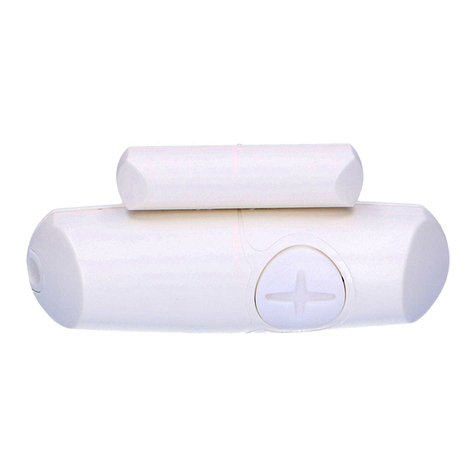
Risco
Risco ShockTec Plus Grade 3 installation instructions

Essence
Essence Care@Home Hip Fall Detector user guide
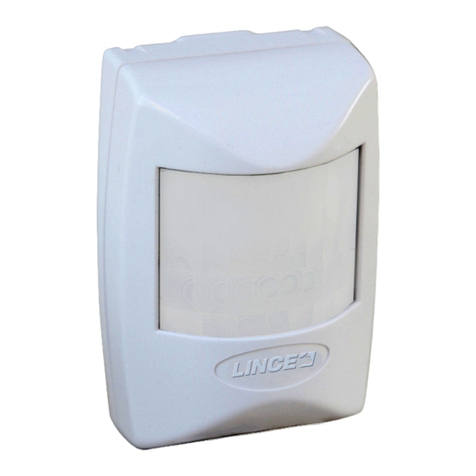
Lince
Lince JOLLY Programming and operating manual

Versahaul
Versahaul VH-SR quick start guide
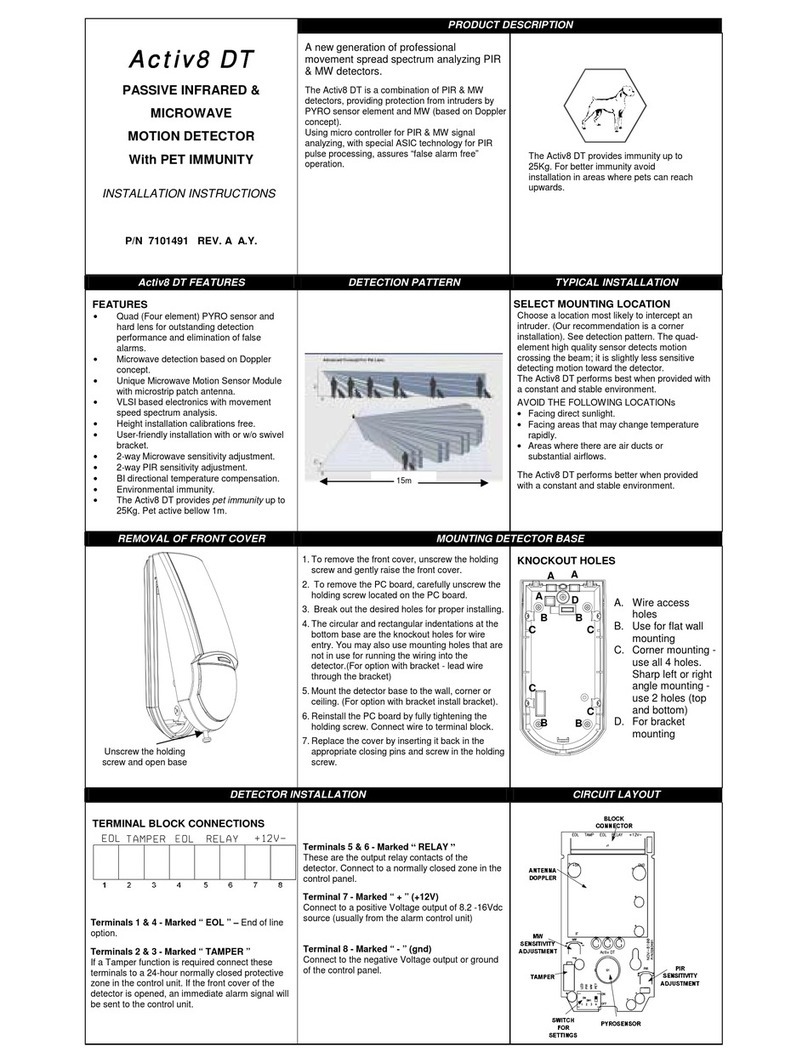
Honeywell
Honeywell Activ8 DT installation instructions

BRINKS
BRINKS BHS3000C Installation and programming instructions
